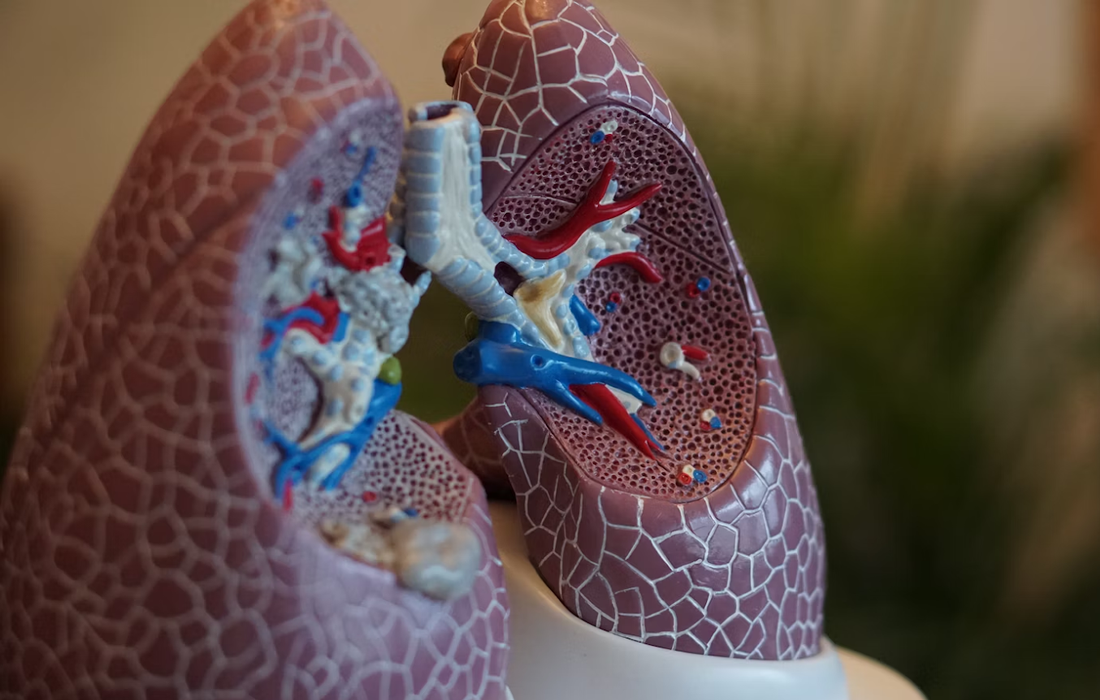Regenerative Medicine News and General Information
Treating Lung Cancer
Research from the lab of cancer biologist Tuomas Tammela, MD, PhD shows that some lung cancer cells retain a “memory” of the healthy cell where they came from — one that might be exploited to make an emerging type of lung cancer treatment called KRAS inhibition more effective.
The study looked specifically at lung adenocarcinoma, a type of non-small cell lung cancer that is the most common type of lung cancer in the U.S. This cancer is frequently driven by mutations in the KRAS gene.
“For a long time, cancer-driving KRAS proteins were considered ‘undruggable,'” says study co-first author Zhuxuan “Zoe” Li, a doctoral student in the Tammela Lab at MSK’s Sloan Kettering Institute. “Within the last few years, however, the U.S. Food and Drug Administration approved the first KRAS inhibitors, with quite a few more in clinical trials. But they don’t work for everyone, and most patients’ cancers eventually acquire resistance to the drugs and come back.”
The team’s findings — co-led by postdoctoral fellow Xueqian Zhuang, PhD — shed important light on lung cancer cells that linger after treatment with a KRAS inhibitor. Importantly, they suggest that separately targeting these cells alongside treatment with a KRAS inhibitor could help prevent recurrence.
The study was recently published in Cancer Discovery, a leading journal for biological insights that have important implications for clinical care.
Within the lungs, oxygen is absorbed and carbon dioxide released via air sacs called alveoli. The lining of the alveoli is made of two distinct types of cells — alveolar type 1 (AT1) and alveolar type 2 (AT2). AT1 cells are long and thin, with a large surface to facilitate gas exchange between the lungs and the bloodstream. AT2 cells, meanwhile, play a caretaking role, secreting compounds that are important for the health and function of the lungs, as well as helping maintain and repair the lungs by dividing to create replacement AT1 cells.
The big problem comes when lung cancer cells — which typically develop from AT2 cells — take on some “remembered” properties of the AT1 cells that AT2 cells differentiate into when they’re playing their stem cell role. Scientists call these cancer cells “AT1-like” cells.
In healthy cells, KRAS plays a key role in regulating cell growth and division. But when the gene becomes mutated, it can lead to runaway cell proliferation.
KRAS inhibitors can switch off this explosive growth, greatly diminishing tumors, but they still leave behind pockets of cancer cells that aren’t sensitive to the drug, and that also give the cancer a chance to develop new mutations to resist the drugs’ effects.
The research team discovered that the cancer cells that remained after treatment were these AT1-like cells. They also found these cells have the capacity to reignite the cancer’s runaway growth.
“Now that we’ve done these proof-of-concept experiments, the next step would be to find surface proteins that are unique to these AT1-like cells and then develop a therapeutic that can bind to them and kill them,” Dr. Tammela says.
Sources:
Zhuxuan Li, Xueqian Zhuang, Chun-Hao Pan, Yan Yan, Rohit Thummalapalli, Jill Hallin, Stefan R. Torborg, Anupriya Singhal, Jason C. Chang, Eusebio Manchado, Lukas E. Dow, Rona Yaeger, James G. Christensen, Scott W. Lowe, Charles M. Rudin, Simon Joost, Tuomas Tammela. Alveolar differentiation drives resistance to KRAS inhibition in lung adenocarcinoma. Cancer Discovery, 2023; DOI: 10.1158/2159-8290.CD-23-0289
Memorial Sloan Kettering Cancer Center. (2023, November 17). Lung cancer cells’ ‘memories’ suggest new strategy for improving treatment. ScienceDaily. Retrieved November 17, 2023 from www.sciencedaily.com/releases/2023/11/231117181004.htm
Image from: https://unsplash.com/photos/selective-focus-photography-of-anatomy-lungs-Pw9aFhc92P8

